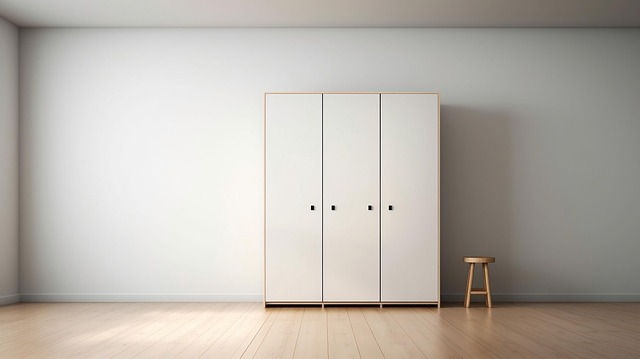Disability Beds
Disability beds provide specialized support and features designed to assist individuals with mobility limitations, disabilities, or chronic conditions. Unlike standard beds, these adaptive sleeping solutions offer adjustable positions, safety rails, easy access features, and customizable comfort options. Designed to promote independence, prevent complications, and improve quality of sleep, disability beds serve as an essential component in creating an accessible home environment for those with varying mobility needs.

How to Choose the Best Disability Bed for Home Use
Selecting an appropriate disability bed requires careful consideration of several factors. First, evaluate the specific needs of the user, including their disability type, mobility level, and any specialized support requirements. Consider the bed’s weight capacity, dimensions, and whether it needs to accommodate medical equipment. The bed frame should be sturdy enough to support positioning adjustments while remaining comfortable for extended use.
Another important consideration is the mattress type. Pressure-relieving mattresses with memory foam or air chambers can help prevent pressure sores for individuals who spend extended time in bed. Some disability beds feature specialized mattress systems designed to reduce the risk of pressure injuries while providing proper support for alignment.
Control systems should be accessible based on the user’s abilities. Look for beds with remote controls featuring large buttons, voice-activated systems, or touch controls that can be operated with limited dexterity. For caregivers, consider options that provide easy access for assistance with transfers and personal care.
Top 5 Adjustable Beds for People with Limited Mobility
Adjustable beds have revolutionized comfort and accessibility for people with limited mobility. These specialized beds typically feature electronically controlled positions that allow users to elevate their head, feet, or both simultaneously. This functionality helps with respiratory issues, circulation problems, and makes getting in and out of bed safer and more manageable.
Hospital-style adjustable beds offer maximum versatility with full electric controls for height adjustment and positioning. These models often include medical-grade features such as Trendelenburg positions and integrated safety rails. Lower-profile residential models blend better with home décor while still offering essential position adjustments.
Rotation beds represent an advanced option for those with severe mobility limitations. These specialized systems can assist with turning the user, reducing the physical strain on caregivers and minimizing the risk of pressure injuries. Some models even include built-in transfer systems to help users move from bed to wheelchair with greater independence.
Air-fluidized beds provide exceptional pressure relief through silicone-coated beads suspended by air circulation. This technology creates a floating sensation that dramatically reduces pressure points, making them ideal for individuals at high risk for skin breakdown or those recovering from surgery or injuries.
Low beds designed specifically for fall prevention offer positioning capabilities while remaining close to the floor. These models prioritize safety for users who might attempt to exit bed unassisted, reducing the risk of injury from falls while still providing necessary adjustability.
Why Disability Beds Improve Sleep & Independence
Disability beds significantly contribute to improved sleep quality through customizable positioning options. Users can adjust their sleeping position to alleviate pain points, improve breathing, and enhance comfort throughout the night. This adaptability addresses specific medical needs that standard beds simply cannot accommodate, leading to more restful sleep and better overall health.
The design features of disability beds promote greater independence for users. Height-adjustable frames allow for easier transfers to and from wheelchairs or standing positions. Integrated grab bars and support rails provide stability for self-repositioning. Remote controls enable users to adjust their position without assistance, fostering a sense of autonomy that impacts psychological well-being.
For individuals with respiratory conditions, the ability to elevate the head of the bed can dramatically improve breathing during sleep. This positioning helps reduce symptoms of sleep apnea, acid reflux, and congestion, decreasing the frequency of sleep disruptions. Similarly, those with circulatory issues benefit from leg elevation options that help reduce swelling and improve blood flow.
Caregivers also experience benefits from disability beds. The appropriate height adjustment reduces back strain during care activities, and the positioning options make routine tasks like changing linens or providing personal care much more manageable. This improved ergonomics for caregivers translates to better care for the bed user and reduced risk of caregiver injury or burnout.
Disability Bed Features and Provider Comparison
When selecting a disability bed, understanding the available options from different providers helps in making an informed decision based on specific needs. The market offers various specialized features that address different mobility challenges and care requirements.
| Provider | Key Features | Base Price Range |
|---|---|---|
| Invacare | Split-rail design, 450-600lb capacity, Trendelenburg position | $1,500-$3,500 |
| Hill-Rom | Advanced positioning, integrated scale, nurse call system | $3,000-$8,000 |
| Transfer Master | Home-friendly design, 500lb capacity, wireless remote | $1,800-$4,200 |
| Medline | Cost-effective, manual/semi-electric options, basic positioning | $800-$2,500 |
| Span America | Pressure management surfaces, bariatric options, microclimate control | $2,500-$6,000 |
Prices, rates, or cost estimates mentioned in this article are based on the latest available information but may change over time. Independent research is advised before making financial decisions.
The cost of disability beds varies widely based on features, technology, and customization options. Basic manual models start around $800, while fully electric hospital-grade systems with advanced features can exceed $8,000. Many providers offer financing options, and insurance coverage may be available depending on the medical necessity and documentation from healthcare providers.
Maintaining and Accessorizing Disability Beds
Proper maintenance ensures the longevity and safety of disability beds. Regular inspection of mechanical components, cleaning according to manufacturer guidelines, and prompt repair of any malfunctions are essential practices. Most providers offer service contracts for periodic maintenance checks of electronic systems and mechanical parts.
Accessories can significantly enhance the functionality of disability beds. Overbed tables provide convenient surfaces for meals and activities. Specialized mattress overlays offer additional pressure relief or temperature regulation. Bed rails come in various configurations to provide safety without restricting independence, and transfer aids like poles or trapeze bars assist with repositioning and getting in and out of bed.
Storage solutions designed specifically for disability beds help keep necessary items within reach. Bedside organizers, attached cabinets, and under-bed storage optimize the space around the bed while maintaining accessibility to medications, devices, and personal items that the user may need throughout the day or night.
This article is for informational purposes only and should not be considered medical advice. Please consult a qualified healthcare professional for personalized guidance and treatment.




